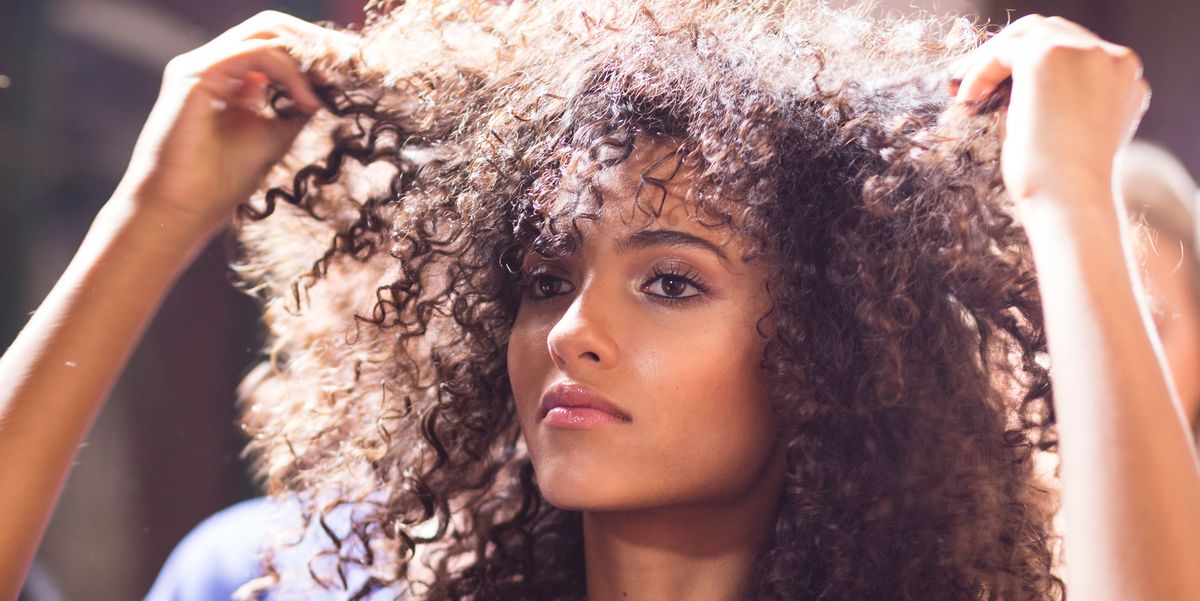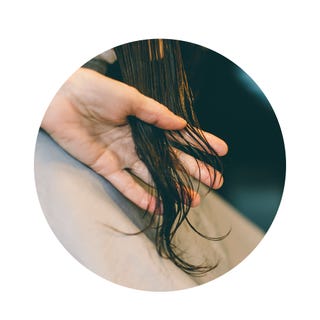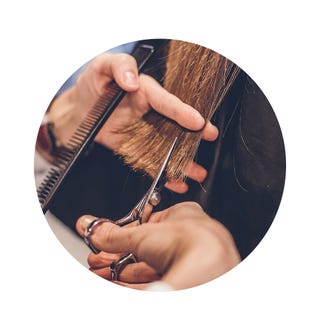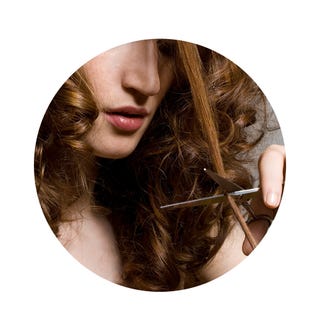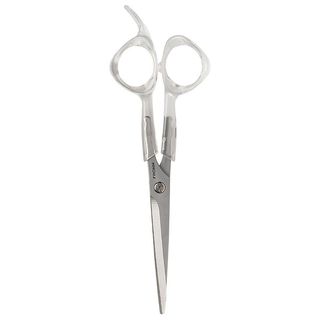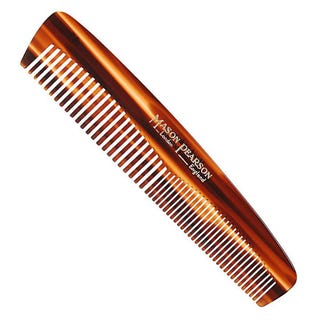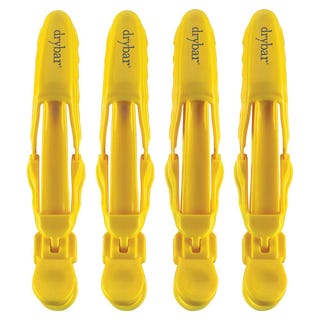The time has come to take matters (and scissors) into your own hands. Typically, we would not advise anyone to cheat on his or her hairstylist—let alone cut your hair at home—but as they say, desperate times call for desperate measures.
If you’re going to attempt to maintain your ‘do at home, gear up with the right professional tips and tools to make your hairstylist proud when this is all over. Remember, this isn’t your typical DIY project, so we urge you to proceed with caution (preferably before any sort of Zoom wine happy hour) to avoid quarantine hair disasters.
Below, New York-based hairstylist Erickson Arrunategui breaks down the dos and don’ts of cutting your hair at home.
DON’T get too excited to play Edward Scissorhands at home
Think of this as a refresher just to hold you over until your next salon visit. “Don’t overdo it,” says Arrunategui. “This is to refine so [your hair] is not out of control, but don’t try to reinvent the wheel. Don’t try to do a full haircut.”
It is important to do the bare minimum to keep this experience as foolproof as possible. The idea is to keep your hair from looking stringy or too outgrown. No one should attempt a full salon cut. Start with small cuts as you can always take off more hair, not vice versa.
DO invest in proper tools
Sharp hair shears are vital for achieving a successful cut. Craft or kitchen scissors simply will not work for this type of DIY project. Also a powerful flatiron, alligator clips, and a comb (wide tooth for curly hair, fine-tooth for straight hair).
DON’T cut your hair wet
You should approach cutting your hair dry, especially if you don’t have experience. “Because wet hair shrinks up, it’s going to take on a life of its own,” explains Arrunategui. “Especially if you are moving through the hair, you can get lost in the hair cut.”
DO “point cut”
When snipping off the ends, cut into the hair vertically (also known as point cutting), not horizontally where you would get a chunkier, blunt line. Cutting vertically into the hair is more forgiving in case you’re not blessed with a steady hand.
DON’T fall into Internet hacks
“I see all these crazy videos online of girls pulling all their hair to the front of their head and trying to cut layers,”says Arrunategui. “I think if you can, try to contact your hairdresser for advice if you are at the end of your wits.” (Remember to tip if possible!)
Until that much-anticipated salon reunion, try these tips for your hair type below.
Straight and Wavy Hair Types
If you have straight or wavy hair, Arrunategui suggests smoothing out your hair first with a flat iron. Even if your hair is straight, you may have a cowlick, dents from the way you slept on it, or kinks at the roots from not washing your hair. The idea is to get the hair smooth and dry so that no ridges form or hair shrinks up.
- Separate the front from the back.
- Start at the back (working in small sections) and point cut the ends that are looking sparse, dry or brittle.
- Move your way towards the front to make sure that it matches.
- If you’ve been on schedule with your haircuts, you should only be taking off about half an inch or so.
Curly and Natural Hair Types
“Curly hair it is a little more forgiving as long as you don’t get scissor happy,” explains Arrunategui. “Because curly hair does shrink up, it kind of does what it wants.”
- Begin with your hair in its dry and natural state.
- Section out your hair with clips so that you can work your way up.
- The trick is to not stretch or pull the curl out. Leave the curl the shape that it is, and point-cut off less than half an inch off the end.
- Go curl by curl, and if there are shorter layers you feel uncomfortable with, leave them alone because they can blend in with the rest of your hair.
Short Hair Types
When it comes to shorter hair, Arrunategui strongly recommends leaving it alone. “I wouldn’t cut anything around the shoulder because that could get messy,” he says. Short cuts are difficult to do for hairdressers, let alone beginners. Longer hair is more forgiving— whereas with a bob, if the line is off, it will be noticeable.
Luckily, the shorter cuts grow in pretty well. “If you have a super short bob, it will grow into a classic looking bob. If you have a long bob it will grow into medium length hair.” All of which are still trendy and will look good. Now is the time to experiment and play with the length. Part your hair a different way, wear it up, and try different styles.
Bangs
Similar to short cuts, Arrunategui says if your bangs grow in don’t get scared of them and embrace new ways of wearing your hair.
But if it is getting to the point where your bangs are driving you insane, chip into them with extra caution since bangs are the frame to your face. You can check out our helpful how to cut your bangs at-home guide here.
Below, shop a few products that can help guide your at-home hair cutting journey:
